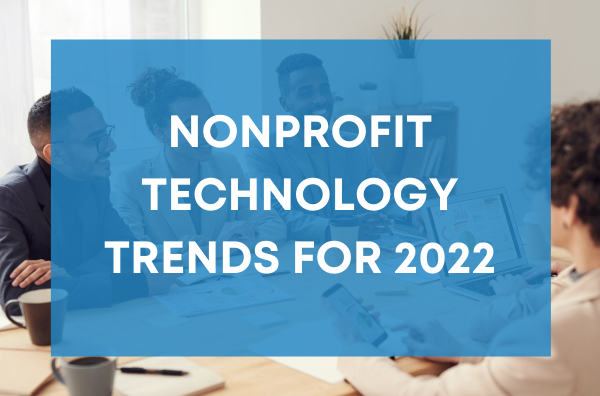Top Nonprofit Trends for 2022

The non-profit trends in 2022 will remain heavily impacted by the ongoing pandemic, which have slowed businesses down and forced changes in how businesses, varying in size and industry, operate. Luckily, industry experts and consultants continue to glean insights regarding such issues and their potential effects so that nonprofits may strategize for the upcoming year.
So that nonprofit leaders can maneuver and acclimate to economic and operations changes, here are three trends to keep an eye on in 2022.
Nonprofit Trends To Watch Out For In 2022
Prevailing issues from 2021 will continue to impact the nonprofit sector in 2022. Fortunately, with such issues come solutions, both digital and non-digital. Let’s begin with a few.
Interest Rates Will Rise And Inflation Will Remain High
The first unfortunate trend non-profits will need to consider is that inflation will continue ruling our lives for at least the foreseeable future. So, how will this affect nonprofits and charitable giving in 2022?
Problem
One problem is that operation costs will increase; as a result, revenue will need to match. So, if your non-profit relies on raising funds, you will have to raise way more money than usual to break even. And although charitable giving is increasing and has been keeping at a steady pace since 2020, if things worsen in 2022, the goodwill of the people may decrease drastically.
Solution
Your organization will need to prepare accordingly to ensure that it can survive in such a competitive environment.
Hence, all non-profits will need to invest in technology systems and software that allows them to manage operations more effectively. Such things that nonprofits need to limit include:
- Overheads
- Staff costs
- Fundraising costs
An Up-To-Date CRM Will Be Become A Necessity For Nonprofits
When it comes to organizational efficiency, a reliable Customer Relationship Management (CRM) system is the way to go.
For a nonprofit, a well-rounded CRM tool plays a crucial role in how client data is gathered, managed, and then further segmented. It also helps them prioritize resources, find efficiencies and maximize fundraising opportunities in general.
Problem
Overall, ever since the pandemic began and people started working remotely, it became nearly impossible to physically juggle and organize client data.
Hence, there are several signs that your nonprofit requires a CRM:
- You cannot find ways to report how successful your fundraising efforts have been and how many donors you were able to retain
- Daily or monthly tasks are being done manually instead of automatically, e.g., sending out newsletters
- If you have several platforms through which you accept donations, e.g., Shopify, Facebook, MailChimp, etc
- You do not leverage AI tech to help you predict how much and when donors will contribute the most
Solution
A good CRM can help you with reporting, data collection, automation, and integrating third-party apps into one place. Here are some other things you can do with a CRM:
- Add the option for credit card processing fees
- Create customizable, unlimited donation forms for tribute, monthly and one-time gifts
- Accept all kinds of payments
Hybrid Events Will Become The New Norm
In 2020, we were all having meetings online; however, in 2021 some organizations slowly started resuming in-person meetings and word days.
Similarly, fundraising galas as in-person events also started to resume in 2021. But, the return to physical work does not mean that the online platforms were lacking, nor does it mean they will stop being used. Instead, for most organizations, remote working tools resulted in higher productivity, low costs, and happier stakeholders. Therefore, the hybrid model has become most feasible and highly preferred.
A survey done by the Global Business Travel Association reported that 71% of respondents weren’t holding hybrid events before the pandemic; however, 60% were planning to in 2021. Most observers and researchers expect the trend of hybrid events to continue for the long haul. Thus, nonprofits need to equip themselves with reliable cloud services and audio and video equipment to hold hybrid events successfully.
In Conclusion
The pandemic undoubtedly accelerated operations transformation for most non-profit organizations and businesses. If it weren’t for technology, it would have been nearly impossible for most organizations to stay afloat. Therefore, it is crucial to tackle this year’s trends using digital means.
Computer Resource of America is well-versed in non-profit tech trends, becoming the industry leader in post-pandemic continuity technology in New York City. So if you are a non-profit struggling to meet your fundraising goals, you can count on CRA to help you.
